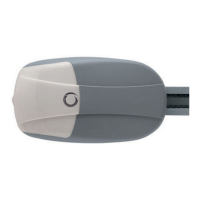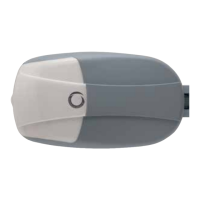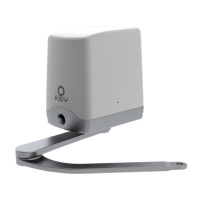EN
24
4.19 Troubleshooting
In this paragraph it is highlighted some malfunctions that may
happen.
Together with the warn on the display, the ashing light (if con-
nected) will warn with a sequence of two short ashes, pause, two
short ashes
Problem Causes Solution
The automation system does not work 1. The plug is not inserted rmly
2. The fuse is burned out
1. Have a technician check
2. Have a technician replace the fuse with one
of the same type
The range of the transmitter is excessively
limited
The battery is not sufciently charged Replace the battery with a new one of the
same model
The chain turns, but the door does not move The unlock system is disengaged Lock the clutch as per 4.3
The alarm continues to sound Alarm: 2000 cycles of operation Disconnect the power supply, then power
back on
The door is not in position when it is opened
or closed, or it does not work
Incorrect setting Make settings again
The door does not work correctly, and the
screen shows "H"
Control unit problem due to humidity Dry the unit (request assistance from a
technician)
Sudden interruptions or jerks in the operat-
ing system, and the screen shows "F"
1. The traction spring is not straight
2. Presence of an obstacle
3 The power supply is not stable
1. Have a technician adjust the traction
spring.
2. Adjust the resistance to the suitable level
until “F” disappears
During operation, you can hear a screeching
noise
Lack of lubricant between the guide and
carriage after a long period of use
Lubricate properly or grease the point be-
tween the guide and the carriage
The chain is loose and noisy Loosening of chain due to prolonged use
without lubrication between the guide and
the carriage
Tight the chain and lubricate it. (see point
4.1).
5.2 Commissioning
Following the successful testing of all (and not just some) devices in
the installation you can proceed with the commissioning
You must prepare, and keep for 10 years, the technical le of the
installation with the wiring diagram, drawing or photo of the installa-
tion, risks analysis and solutions adopted, manufacturer declaration
of conformity of all devices connected, instruction manual of each
device and maintenance schedule of the installation
Fix on the gate or door a plaque indicating the automation data, the
name of the person responsible for the commissioning, the serial
number and year of construction, the CE mark
Attach a plaque indicating the steps required to manually unlock
the motor
Implement and deliver to the end user the declaration of conform-
ity, the instructions and warnings for use for the end user and the
maintenance schedule of the installation
Make sure the user understands properly the automatic, manual
and emergency operation of the automation.
Inform the end user in writing of the dangers and risks still present
WARNING - after detecting an obstacles, the gate or door stops,
and the automatic closing is excluded; to restore movement
you must press the command button or use the transmitter.
5 - TESTING AND COMMISSIONING THE AUTOMATION
5.1 Testing
All installation components must be tested following the procedures
outlined in the respective instruction manuals
Check that they meet the guidelines in Chapter 1 - Safety warnings
Check that the gate or door can move freely once the automation
is unlocked, and that they are balanced and stationary if left in any
position
Check the correct operation of all connected devices (photocells,
sensitive edges, emergency buttons, etc.), testing the opening,
closing and stopping of the gate or door via the connected control
devices (transmitters, buttons, switches)
Carry out measurements of the impact force, as prescribed by
standard EN12445 adjusting the functions of speed, motor force
and deceleration of the unit if the measurements do not give the
desired results until you nd the right setting
The testing of the automation must be performed by qualied tech-
nicians who must perform the tests required by relevant legisla-
tion related to risks, ensuring compliance with the provisions of the
regulations, in particular the EN12445 standard, which species the
testing methods for the automation of doors and gates.

